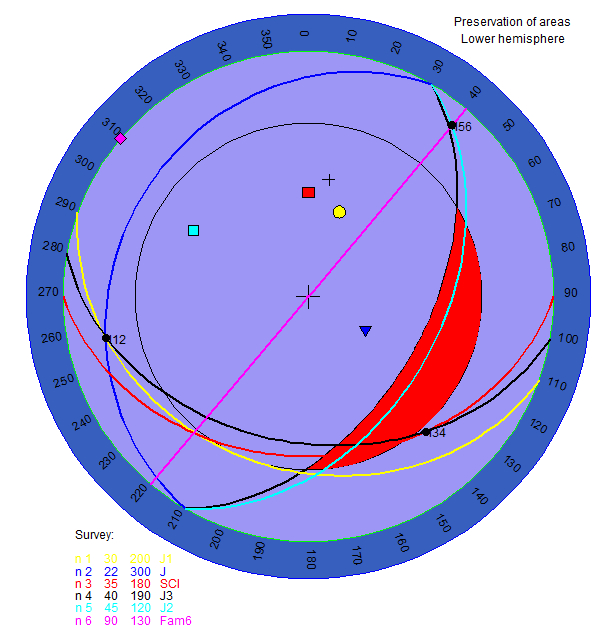Stability check
The data relative to the slope are required.
•Immersion: immersion of slope in degrees
•Inclination: inclination of the slope in degrees
•Friction: friction angle of the slope
Representation of the great circle in equal-area or equiangular diagram
The stability analysis is performed with the Markland test. In this test is calculated the intersection line (plunge, trend) of the plans taken in pairs (i,j) and is checked if the point that defines the intersection line I (i,j) falls inside the area shaded in red, included between the great circle that defines the slope plane and the circle defined by the angle of friction. In this case there can be sliding along the intersection line between the plan i and the plan j.
It should be noted that the Markland test represents a first estimate for the study of the slope stability, in fact, it indicates the possible sliding surfaces between those that should be studied by the usual methods of rock mechanics.
Notes on Markland test
Intersection module: radius of the joint that represents the intersection of the plans that identify the wedge checked for stability (in yellow).
Slope module: radius of the plan that identifies the slope (in blue).
Friction module: radius of the angle of friction (in green).
When the intersection module is the between the slope module and the friction module it means that there is instability and it falls in the red colored area.

|
|
© GeoStru